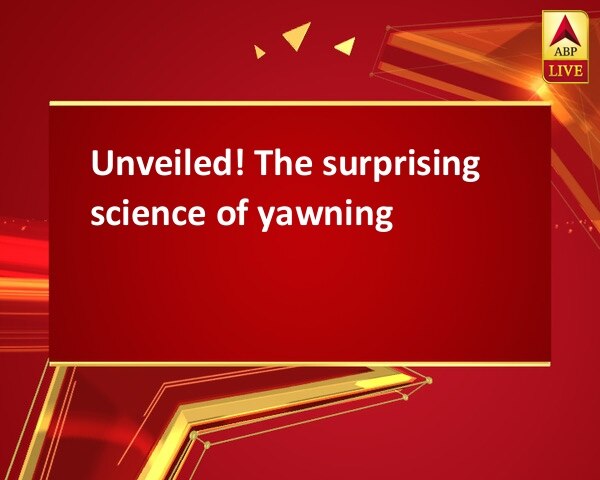
Unveiled! The surprising science of yawning

Washington D.C. [USA], September 1 (ANI): What is yawning? Why is it so contagious?
Experts at the University of Nottingham have published research that suggests the human propensity for contagious yawning is triggered automatically by primitive reflexes in the primary motor cortex -- an area of the brain responsible for motor function.
Their study -- 'A neural basis for contagious yawning' -- has been published in the academic journal Current Biology.
It is another stage in their research into the underlying biology of neuropsychiatric disorders and their search for new methods of treatment.
Their latest findings show that our ability to resist yawning when someone else near us yawns is limited. And our urge to yawn is increased if we are instructed to resist yawning.
But, no matter how hard we try to stifle a yawn, it might change how we yawn but it won't alter our propensity to yawn. Importantly, they have discovered that the urge to yawn -- our propensity for contagious yawning -- is individual to each one of us.
Stephen Jackson, Professor of Cognitive Neuroscience, in the School of Psychology, led the multidisciplinary study.
He said: "We suggest that these findings may be particularly important in understanding further the association between motor excitability and the occurrence of echophenomena in a wide range of clinical conditions that have been linked to increased cortical excitability and/or decreased physiological inhibition such as epilepsy, dementia, autism, and Tourette syndrome."
-Echophenomena isn't just a human trait
Contagious yawning is triggered involuntarily when we observe another person yawn -- it is a common form of echophenomena -- the automatic imitation of another's words (echolalia) or actions (echopraxia). And it's not just humans who have a propensity for contagious yawning -- chimpanzees and dogs do it too.
Echophenomena can also be seen in a wide range of clinical conditions linked to increased cortical excitability and/or decreased physiological inhibition such as epilespsy, dementia, autism and Tourette syndrome.
-The neural basis for contagious yawning
The neural basis for echophenomena is unknown. To test the link between motor excitability and the neural basis for contagious yawning the Nottingham research team used transcranial magnetic stimulation (TMS).
They recruited 36 adults to help with their study. These volunteers viewed video clips showing someone else yawning and were instructed to either resist yawning or to allow themselves to yawn.
The participants were videoed throughout, and their yawns and stifled yawns were counted. In addition, the intensity of each participant's perceived urge to yawn was continuously recorded.
Using electrical stimulation they were also able to increase the urge to yawn.
Georgina Jackson, Professor of Cognitive Neuropsychology in the Institute of Mental Health, said: "This research has shown that the 'urge' is increased by trying to stop yourself. Using electrical stimulation we were able to increase excitability and in doing so increase the propensity for contagious yawning. In Tourettes if we could reduce the excitability we might reduce the ticks and that's what we are working on."
Professor Stephen Jackson said: "If we can understand how alterations in cortical excitability give rise to neural disorders we can potentially reverse them. We are looking for potential non-drug, personalised treatments, using TMS that might be affective in modulating inbalances in the brain networks." (ANI)
This story has not been edited. It has been published as provided by ANI
Top Headline
Trending News

and tablets



























